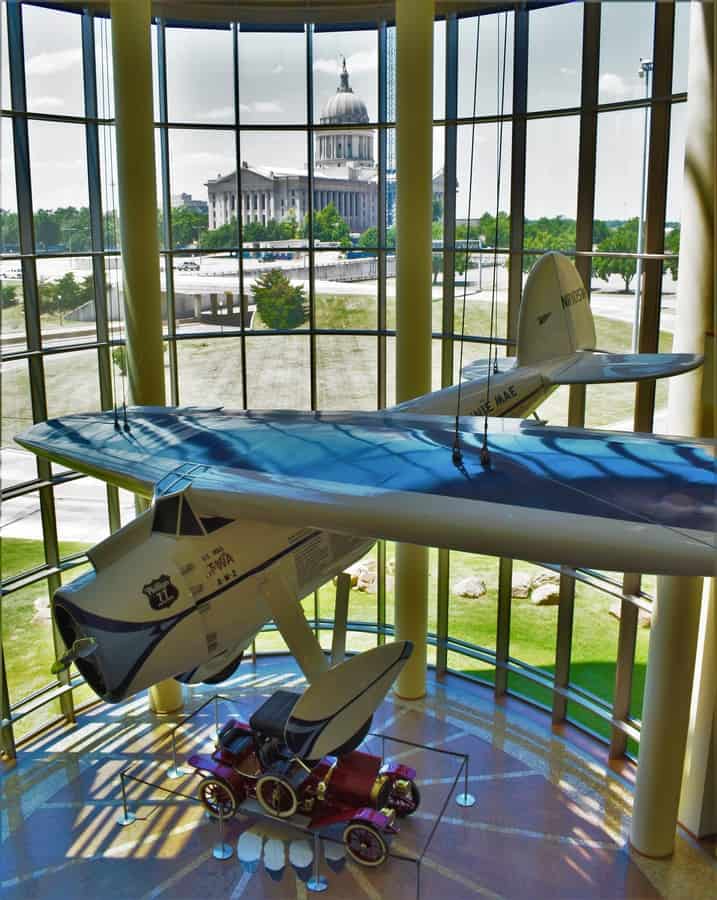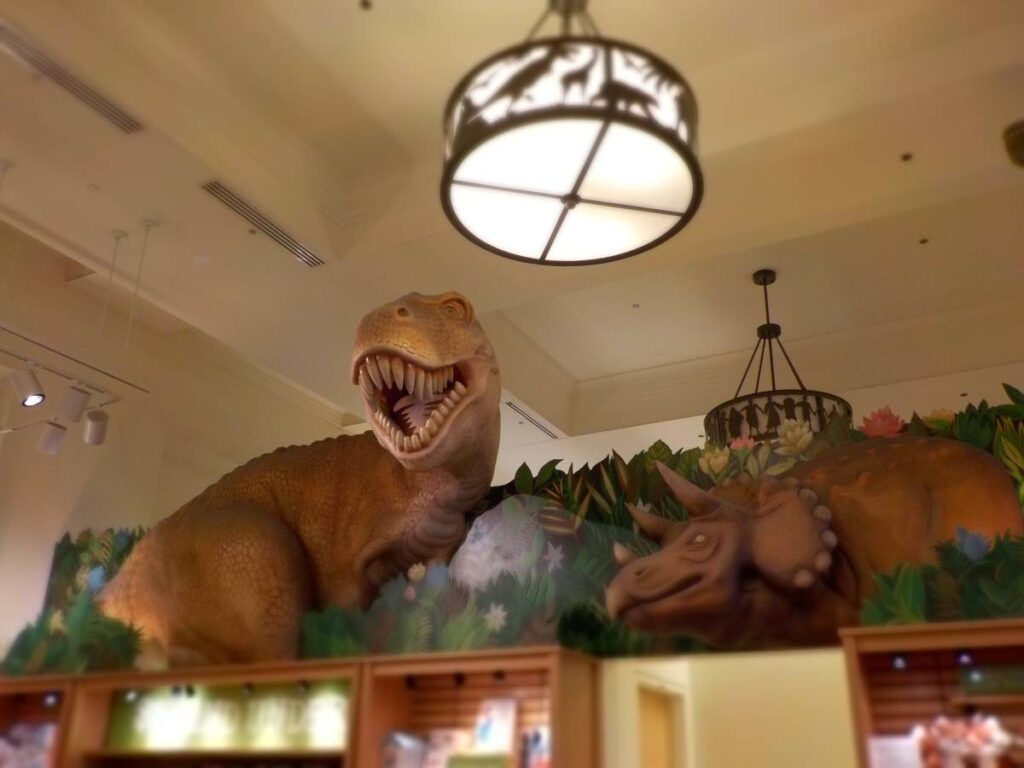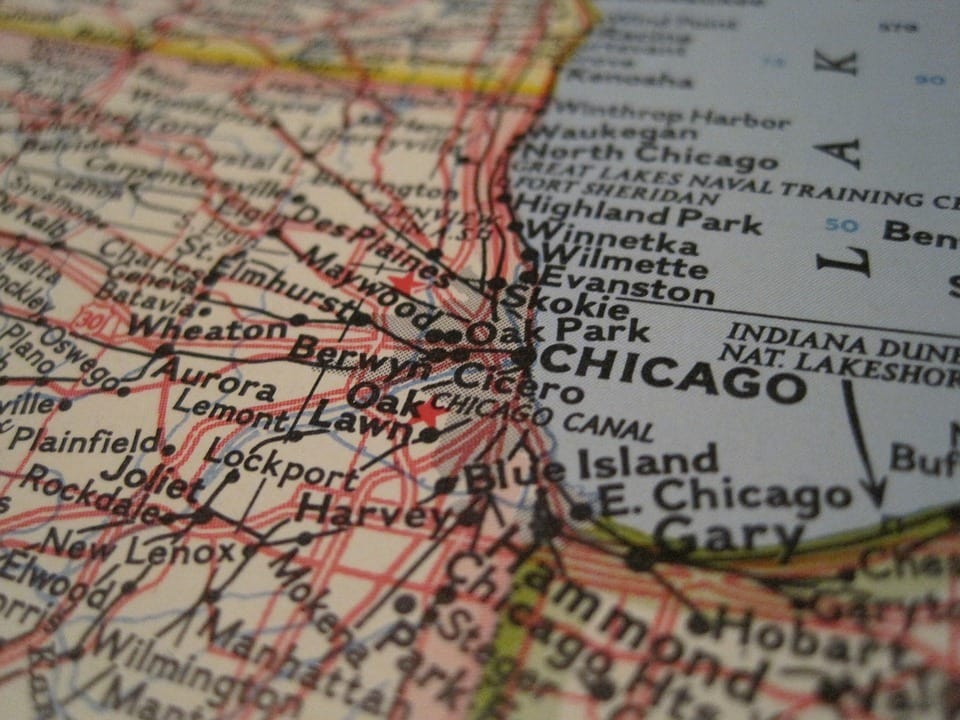The idea of containing all of the history of a state in one location would be futile. Each one would be overflowing with a wealth of artifacts and information, that just couldn’t be gathered in one place. Of course, many of the state museums do a fantastic job at detailing a wide variety of the history, which allows visitors to get a taste for how the region has developed over time. When we planned our visit to the Oklahoma History Center, we were hoping to find out more about our neighbor state to the south. We just didn’t realize how much we would be touching the past of this unique territory.
We want to thank Visit OKC and the Oklahoma History Center for their hospitality. Rest assured that all opinions are our own.
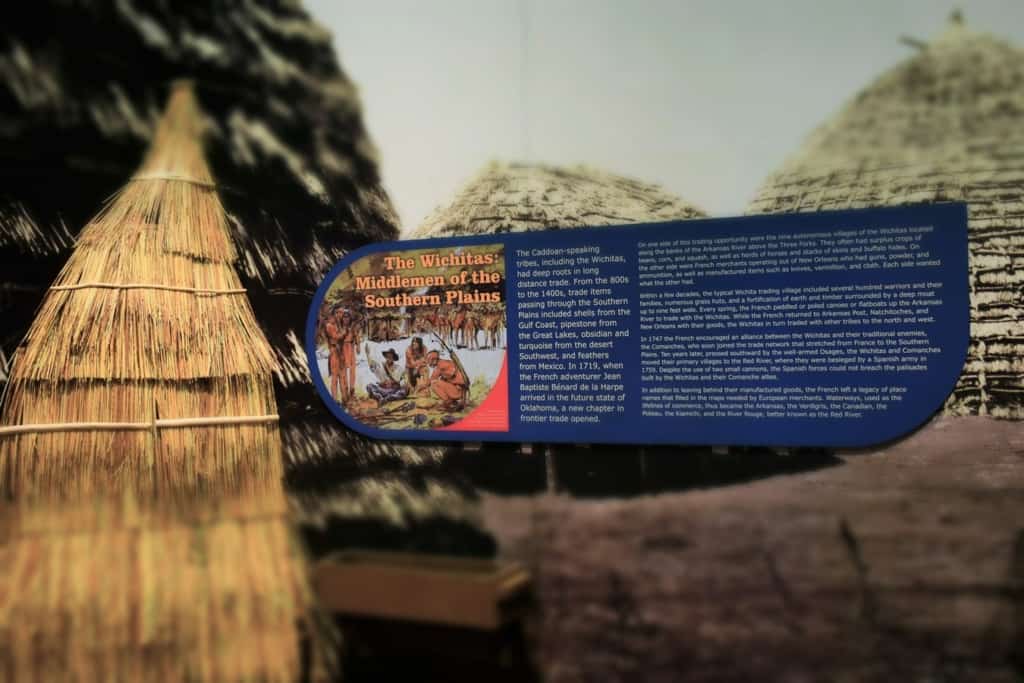
Pre-Explorer Age
Archaeology shows that people have inhabited Oklahoma territory for centuries. Arrowheads and projectile points have been discovered in dig sites. Some of these came from the Alibates Quarries located just south of the panhandle region. Many of these cultures were found by Hernando de Soto when he explored the New World in the early 1500s. By the time more European explorers arrived, prior to the Revolutionary War, there were two dominant tribes in the area. The Wichita people had established homes across much of the Great Plains. They were farmer/hunter people, who built a network of small villages. While the Wichita worked the lands, there were others who frequented the region.
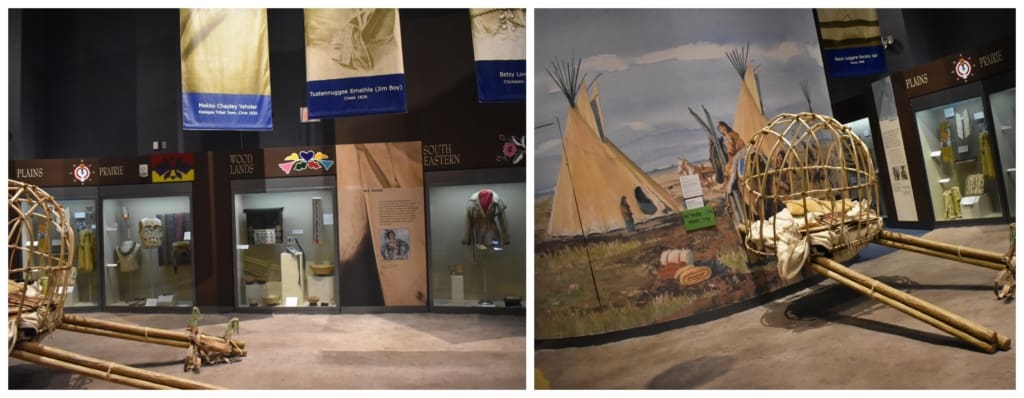
Life on the Plains
The Apache people were known for their nomadic lifestyle. Being primarily hunters, they followed the herds of buffalo, as they migrated across the lands. From what historians can surmise, the Wichita and Apache coexisted in peace. The Apache was using dogs to help move their belongings. When Francisco Coronado visited the territory, he introduced the horse. This would dramatically change life on the plains for the native tribes. With this newfound assistance, the Apache could expand their territory north and south across the continent.
The native tribes did not believe in the ownership of the land but reserved themselves to be stewards of it. Far removed from what was occurring globally, the native people went forward with their daily lives. Around them, the ownership of the territory would change from France to Spain, and eventually the United States. While all of this swirled around them, life for the native people remained fairly stable. The informative displays at the Oklahoma History Center allowed us to see for ourselves the struggles faced by the native people. Touching the past included feeling the weight of one of the travois, their form of a wagon that would be drug from camp to camp.

Indian Relocation
With the ever-increasing number of immigrants to the east, the United States government was struggling with how to handle the indigenous people. Treaty after treaty was formed, which promised the native tribes new lands, in exchange for the current homes. As the numbers of new immigrant arrivals swelled, each of these treaties would be broken, to open up new land for settlers. In 1830, President Andrew Jackson would sign into law the Indian Removal Act. While it was meant to provide for a peaceful relocation, too often force was used to meet the desired outcome.
Part of what would become Oklahoma was designated for the five civilized tribes. Many in the government saw no value in these lands, so they felt this was the perfect region for the new reservations. Moving the Seminole, Creek, Choctaw, Chickasaw, and Cherokee tribes were accomplished by the end of the 1830s. Many native Indians would perish on the forced marches that were overseen by the U.S. government.
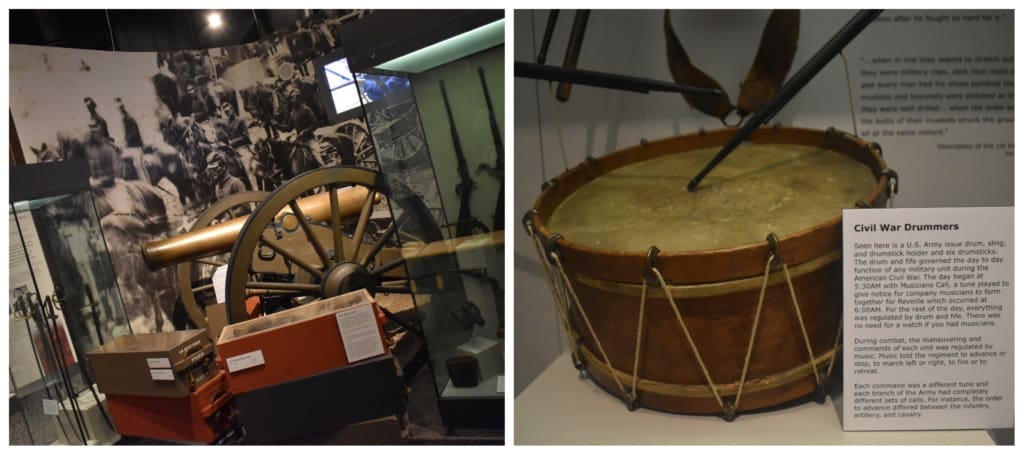
The Nation Prepares for War
The landscape of America was changing. The Louisiana Purchase had put the center of the continent into United States control. This opened up new lands for settlers and speculators. Just south of the Oklahoma region, Texas was declaring its own independence from Mexico. From 1836 to 1845, the region would be a separate country but would be annexed by the U.S. This action helped lead to the Mexican-American War in 1846. After the war ended, Texas was added to the Union as a slavery state.
To stay within the boundaries being applied to new slave states, the northernmost border of Texas would be moved south, leaving the tract that would eventually become the Oklahoma Panhandle. As the map filled in all around the Midwest, the territorial borders for Oklahoma would be defined by what was leftover. Even with all of the areas around claiming statehood, it would take until 1907 for Oklahoma to have a star on the U.S. flag.
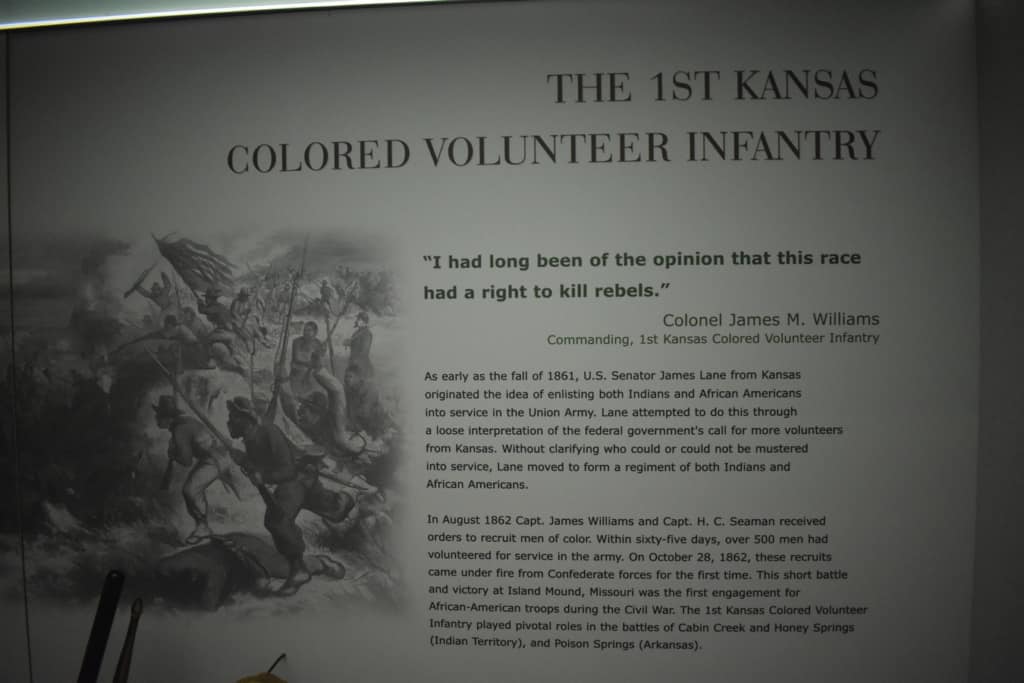
Engaging the Native Tribes
The tumultuous times that had fallen on our country would not leave the territory unscathed. By the beginning of the 1860s, the Oklahoma region was home to around 55,000 native Indians. All around them, new states were being established. With the issue of slavery becoming a flashpoint, the addition of Kansas and Nebraska added fuel to the fire. The Confederates were quick to form alliances with the major Indian tribes. The Civil War even raged within the borders, as Union and Confederate loyal tribes faced off with each other. This conflict continued throughout the war, and it would lead to the president suspending treaties with any tribe supporting the Confederate side. There were a few that held on for the duration of the Civil War. In fact, it was a native Indian general who was the last to surrender on June 23, 1865. This Cherokee chief would find his tribe left out of negotiations, after the war.
We were surprised to find so many informative exhibits at the Oklahoma History Center. While we knew that our region of the country had been a hotbed for conflict, it still amazes us when we learn new details about specific battles. It reminds us that in all of these smaller conflicts, within the Civil War, there were heroes as well as casualties.
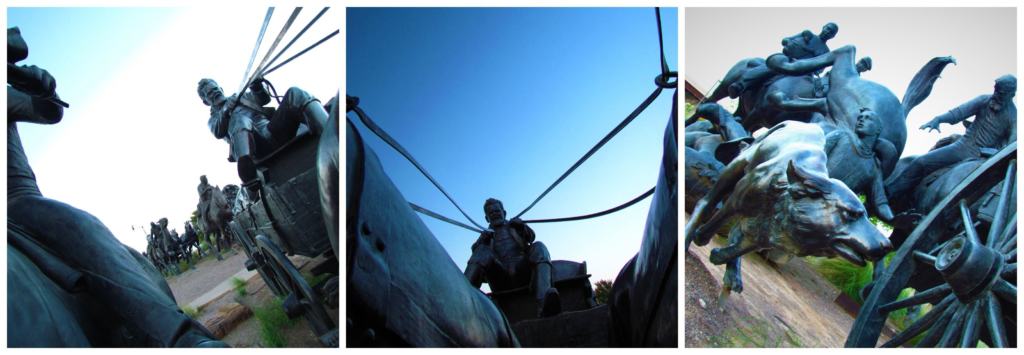
Opening the Land
For years, Oklahoma territory was considered uninhabitable for anyone except the native Indians. The quickly changing weather, often running to extremes, made survival complicated. Much of the landscape appeared difficult to farm or ranch. As the end of the 1800s approached, the country was discovering improved methods of farming. These would help drive the demand for new land that settlers could claim. In March of 1899, President Benjamin Harrison announced that nearly 2 million acres of Indian territory would be made available to settlers.
At high noon, on April 22, the “land rush” would begin. Over 50,000 hopefuls swamped the land, in anticipation of the event. A few early starters slipped across the line, to get a head start on finding a claim. They would be labeled “Sooners”, and many a legal battle would erupt over their claims. During an earlier visit to Oklahoma City, we had a chance to visit the Land Rush statues at BrickTown. These life-size pieces bring the feel of the moment to life.
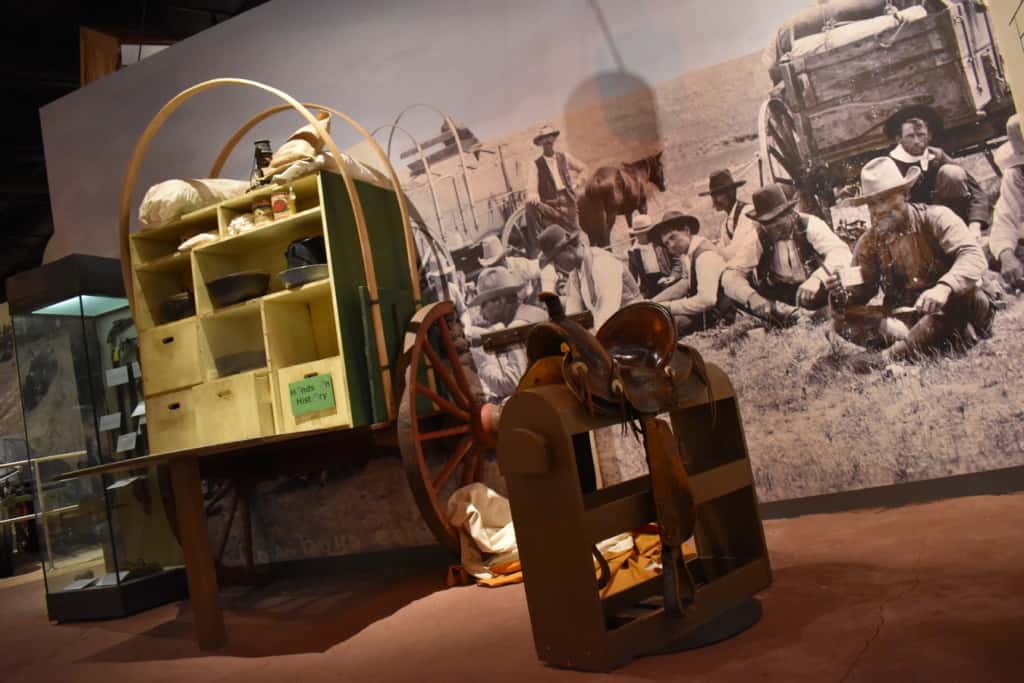
Tending the Herd
As we made our way through the exhibits at the Oklahoma History Center, we found opportunities for touching the past. Here and there, we discovered these stations that allow visitors to interact. This one gave us a glimpse of life as a cowboy. We could climb aboard a saddle, to imagine the open prairie all around us. Nearby, a chuck-wagon awaited a cook to prepare the evening meal for the hungry cowboys. Can you imagine the hardships that must have come with moving herds from Texas, up the Chisholm Trail?
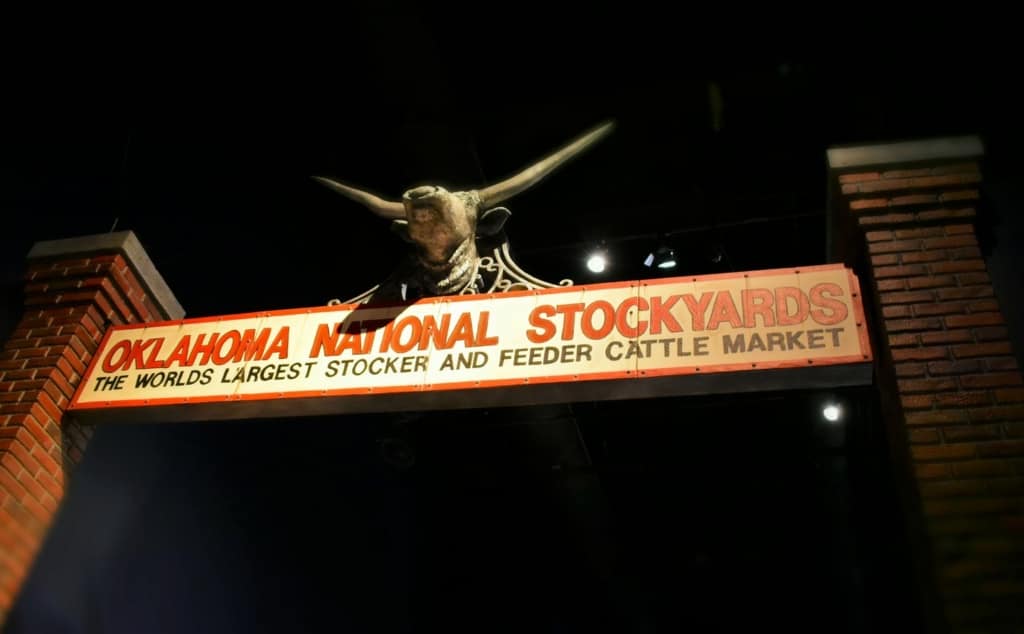
Heading to Market
By the time that Oklahoma became a state, in 1907, the landscape was already dotted with growing cities. Oklahoma City had a population of around 50,000 and was preparing for its next phase of growth. With so many cattle ranches in the state, it made sense to develop some meatpacking plants. This would eliminate the need to move all of the herds out of state, for processing. In 1910, the Oklahoma National Stockyards Company opened as a public market. This development spurred the creation of multiple packing plants, to service the stockyards. Business boomed, and by 1966 it was the sixth-largest market in America. By 1973, it became the largest and still holds that distinction today.
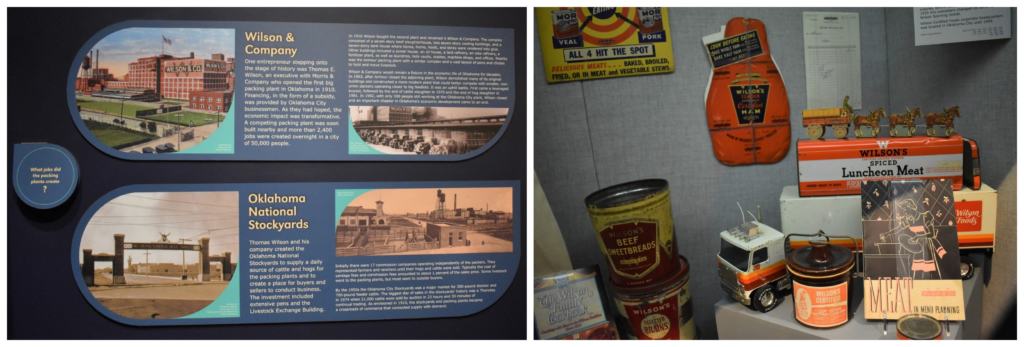
Feeding a Nation
Having a major stockyard meant that packing plants would have a steady supply. This attracted companies like Armour and Wilson to open plants in Oklahoma City. The partnership blossomed, and soon Oklahoma City had cemented its place as a major meatpacking location. After World War II, Oklahoma City emerged as a growing leader in this industry. During the 1960s and ’70s, while many other cities saw a shuttering of meatpacking plants, Oklahoma City continued to flourish. With good transportation access from highways and railways, their central location allows for continued success.
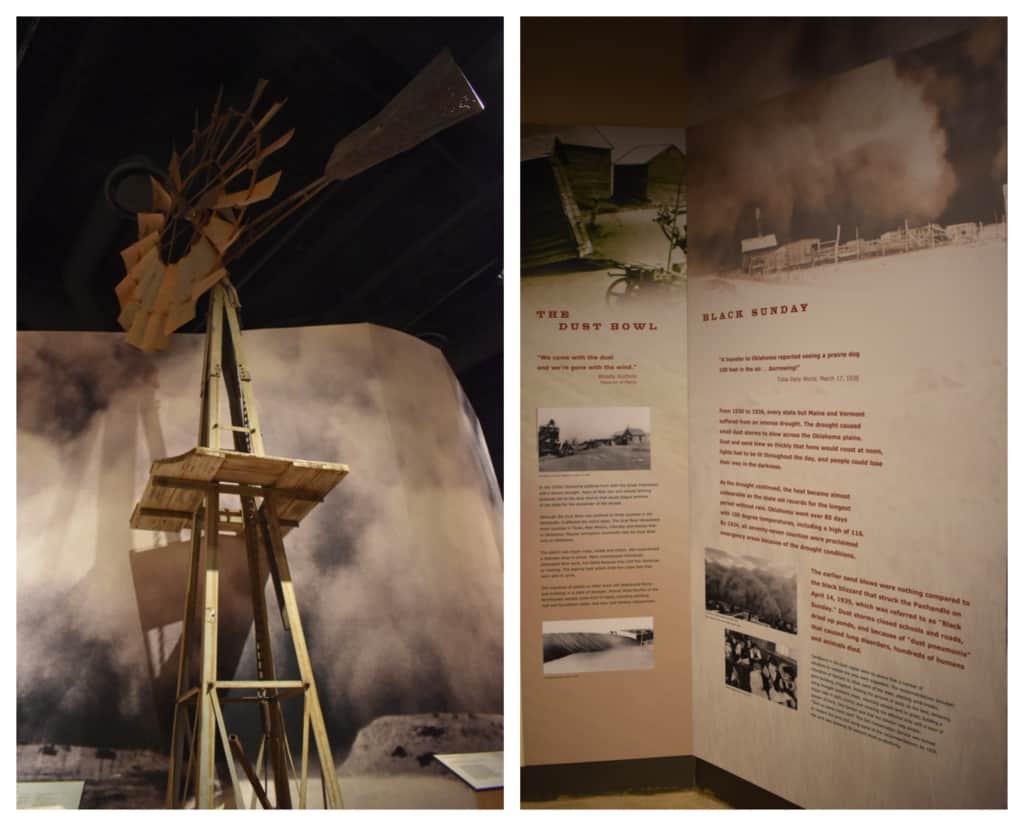
Dust in the Wind
Oklahoma has seen plenty of struggles, as well as successes. During the 1930s, the country was battling with the Great Depression. While this impacted the entire nation, regionally there were even more issues arising. The high plains were well-known for receiving sparse amounts of precipitation. While these arid grasslands could support grazing animals, they were not considered prime farming lands. After the Civil War, waves of immigrants flooded west looking for land. Some would come to the Great American Desert with hopes of creating a new life.
After World War I, the need for wheat and other crops was felt worldwide. With the addition of motorized farming equipment, farmers saw the potential to work on this untapped ground. While this panned out during wet years, it could spell disaster during times of drought. After a run of favorable weather in the 1920s, the climate would change for the worse. Beginning in the summer of 1930, drought returned to the high plains. This dried out the thin layer of topsoil, which was picked up by the gusting winds that frequent the region. Before long, these “dust storms” would become an all too frequent sight. By the mid-1930s a mass migration would occur, which would see families fleeing to the west.
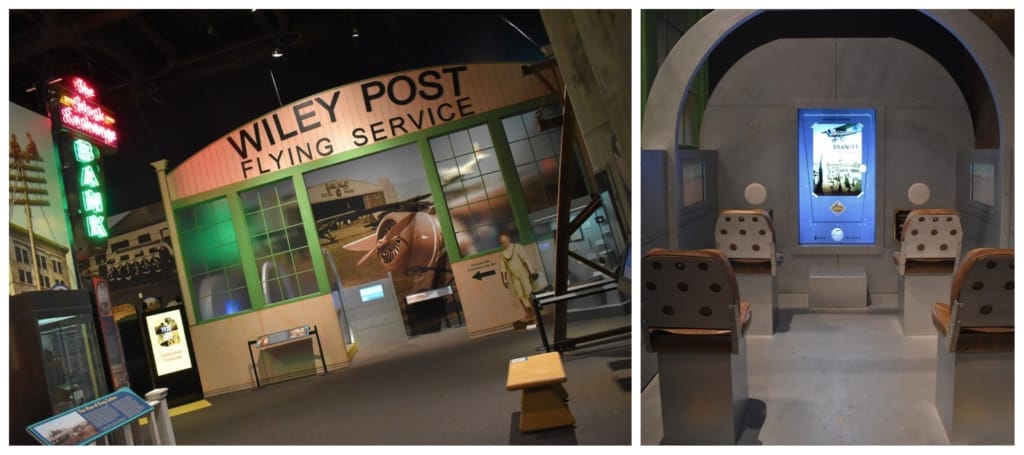
Taking to the Skies
One of the reasons we enjoy so many museums is the opportunity to learn about local history. It surprises us how often we find a connection with someone or something we recognize from the past. A good example was this exhibit on aeronautics. Stepping into the old barn we found ourselves touching the past of airplane travel in Oklahoma. Little did we know that Braniff Air Lines originally started in Oklahoma City. Inside of this interactive exhibit, we were able to strap in and enjoy a ride, as the video screen took us up for a look-see. To be honest, we actually sat through this display twice, since it was filled with some good information. Be sure to check it out for yourself, when you visit.
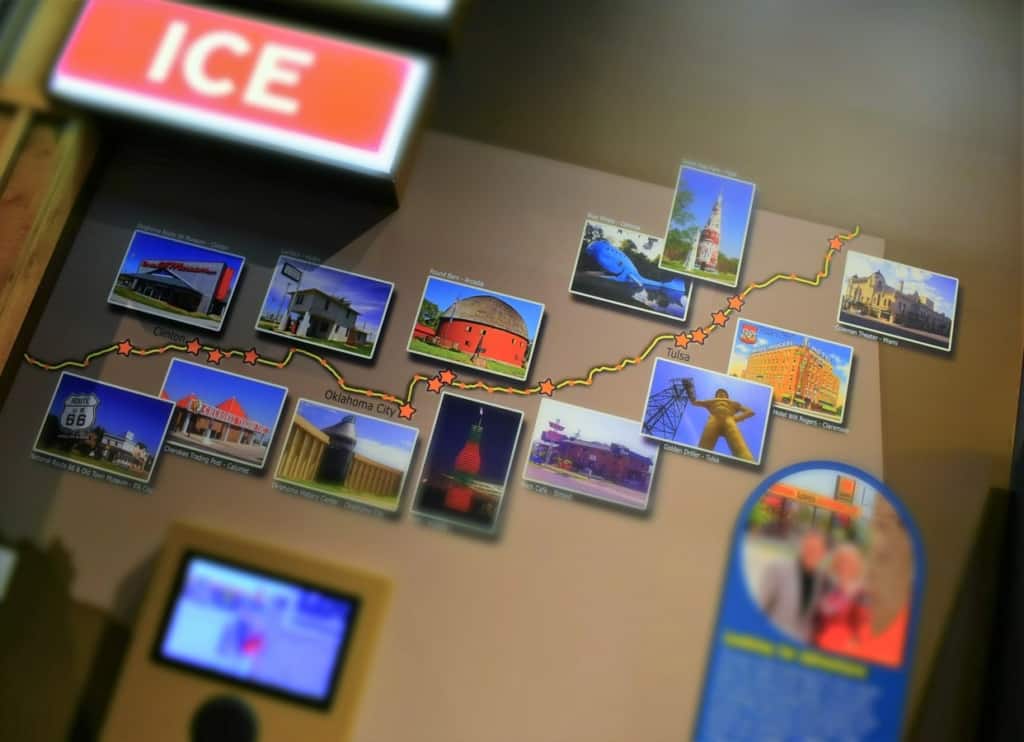
A Route Runs Through It
Crystal and I grew up in the era when Route 66 was one of the main arteries for travel across the western half of the nation. While this leisurely choice was eventually replaced by interstates, there are still sections that maintain its nostalgic touch. Oklahoma holds a variety of sights for those traveling the Mother Road. While some classic stops have passed away from neglect, a recent resurgence of interest is bringing a new generation of travelers to the region. When following the route, be sure to keep your eyes peeled for unique attractions. You just never know when one will pop up on the horizon.

Plan Your Own Road Trip
Oklahoma has such a storied history, that there is no way we could capture it all in this article. With so many places to explore, our hope is that we will spark your explorer side. Plan your own road trip, and you will find yourself touching the past at sites all across the land. If you want to learn about more Oklahoma destinations, be sure to check our Southwest category. You are sure to find some great vacation ideas that are family-friendly. After all, road trips make for memories that will last a lifetime. Travel safely!


